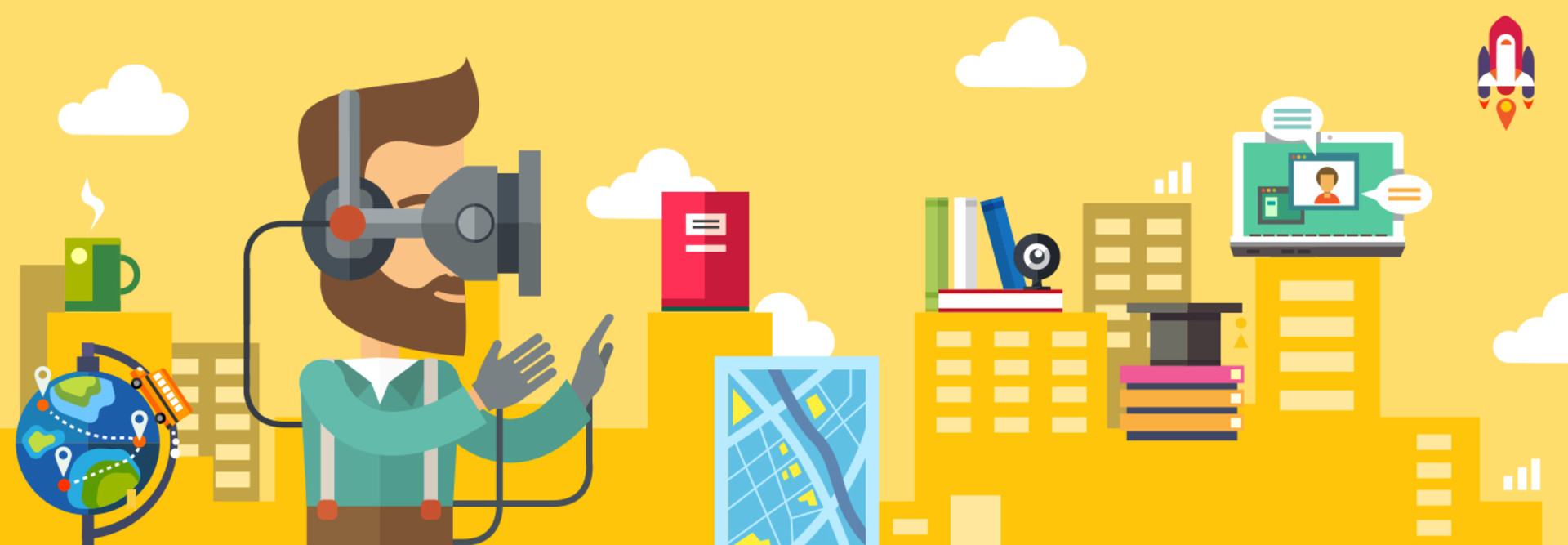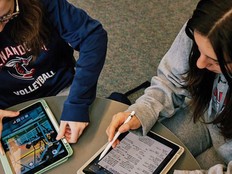Virtual Reality and the IoT Can Fuel a Connected, Gesture-Driven Classroom
An Internet search for virtual reality typically turns up goggle-wearing video game players who wildly swing their hands in the air to fend off aliens.
That may be the popular conception of virtual reality (VR). Yet it’s taking shape far differently, especially with regard to higher education.
Many universities already tap into the technology to create environments that students may not experience otherwise. Some use VR to take students on a trip around the globe, gain training in science topics and teach specific engineering skills.
The trend may only pick up with recent innovations by Google, where gestures and Internet-connected devices could make the classroom and many industries a more transformative place.
While such a future may seem far off, the cutting-edge technology is now in use at a few institutions.
Virtual Classrooms on the Rise
The projected growth of the virtual reality industry by 2018
SOURCE: MarketsandMarkets, “Augmented Reality and Virtual Reality Market by Technology Types — Global Forecast and Analysis, 2013–2018,” March 2014
Natalie B. Milman, an associate professor of educational technology at The George Washington University, cited the medical field as one area where use of VR and related technologies is expanding. GW’s nursing school uses a full-blown simulation lab for training. The lab includes mannequins that have a pulse, can speak and blink their eyes, and spurt blood.
Milman, who also serves as director of the university’s Educational Technology Leadership program, says more mainstream classes engage with tech-infused lessons through the use of interactive clickers and tablets.
Google is accelerating the march forward toward a more gesture-fueled Internet of Things. The company unveiled projects this year that incorporate not only virtual reality, but also a technology called augmented reality: a view of the real-world environment that is supplemented by computer-generated sounds, video and graphics.
One, Project Soli, is a radar device about the size of an SD card. The signal changes depending on one’s hand movements or gestures.
Bring on the Future
Google’s major movement into the space, Project Tango, allows tablets, robots and other devices to use spatial and dimensional understanding of their environments. For example, one could use a tablet to scan a room and create a 3D map of the space, which could then be used by an architect or designer for space planning.
Otto Benavides, an associate professor of education at California State University, Fresno, runs the NASA Educator Resource Center for central California educators. He envisions a future in which students will be able to use these and other technologies to make the classroom a portal to other environments.
“It could be anything — a geologist working remotely in the Amazon and uploading information via satellite. A scientist or student from any field may be able to interact and see what they’re doing. I see those happening, and I don’t think it’s going to take that long to get there,” he said.
The rise in interest from large companies such as Google, and growing research in the field, give hope to the idea of a more connected, gesture-filled future in higher ed.









